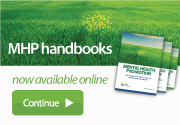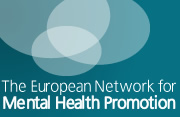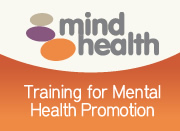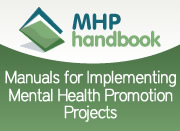Tools
- Utilities:
- Print this page
- Send this page
- Font size:
- Increase font size
- Decrease font size
Browse Database
Login, so as to add your own items.
-
Early Warning, Timely Response: A Guide to Safe Schools
07/05/2008
Early Warning, Timely Response: A Guide to Safe Schools offers research-based practices designed to assist school communities identify these warning signs early and develop prevention, intervention and crisis response plans. The guide includes sections on: Characteristics of a School that is Safe and Responsive to All Children Early Warning Signs Getting Help for Troubled Children Developing a Prevention and Response Plan Responding to Crisis Resources Methodology, Contributors, and Research Support Settings: Education
MHP Steps: Implementation | Needs Analysis -
Voices and Choices: Planning for School Health
05/05/2008
Voices and Choices is a practical, do-it-yourself, strategic planning process that is available to secondary schools It is designed for schools interested in creating a safer, more supportive, health promoting school environment. The materials necessary are all available on-line, and include a Guide To Implementation, a Student Needs Assessment Questionnaire, and a custom School Health Profile. Settings: Education
MHP Steps: Needs Analysis -
Mindmatters: A Mental Health Promotion Resource for Secondary Schools
05/05/2008
MindMatters uses a whole-of-school approach to mental health promotion. MindMatters assists school communities including teachers, parents and students to take positive action to create a climate of mental as well as physical health within secondary schools. Settings: Education
MHP Steps: Preparation -
Second Step: A Violence Prevention Curriculum
05/05/2008
Based on over 20 years of research and classroom application, the award-winning SECOND STEP program integrates academics with social and emotional learning. Children from preschool through eighth grade learn and practice important skills, such as anger management, cooperation, respectful behavior, and problem solving. These skills help decrease students' negative and violent behaviors—fighting, name-calling, and stereotyping—helping to return the focus of classroom time to where it belongs: learning. Children also learn to recognize and respect people with different backgrounds, perspectives, and ethnicities. These essential life skills will help students in the classroom, on the playground, and at home. Settings: Education
MHP Steps: Implementation -
Promoting Children's Mental Health within Early Years and School Settings
05/05/2008
This guidance is designed to help teachers and others, working alongside mental health professionals, to promote children’s mental health and to intervene effectively with those children experiencing problems. It forms part of a joint approach with the Department of Health to promote health issues in schools and other mainstream settings. Settings: Education
MHP Steps: Preparation | Implementation | Needs Analysis -
European Alliance Against Depression (EAAD)
01/04/2008
The “European Alliance Against Depression (EAAD)” is committed to the care of depressed patients and prevention of suicidality in Europe. This aim is being realised by implementing community-based intervention programmes on four different levels. Co-operation with general practitioners and paediatricians: GPs and paediatricians are invited to educational workshops on how to recognise and treat depression and explore suicidality in the primary care setting. Information material (e.g. video tapes) are distributed that can be handed out to patients. Via a hotline GPs and paediatricians can consult a specialist concerning the treatment of individual cases of depression in their practice. Public Awareness Campaign: The broad public will be addressed by large-scaled public awareness campaigns including posters, cinema spots, information leaflets, brochures, public events and internet homepages. The aim is to improve the knowledge about adequate treatments of depression and to reduce the stigmatisation of the topic “depression” and the affected individuals. A close co-operation with the media takes place to strengthen the public discussion. Special guidelines on media coverage of suicidality are distributed to prevent imitative suicides. Training sessions for multipliers: Educational workshops are provided to various target groups ( e.g. health care professionals, priests, counsellors, police) playing an important role in disseminating knowledge about depressive disorders. Particular emphasis is put on special offers for parents, youth workers and teachers in order to reach children and adolescents suffering from depression, deliberate self harm and suicidal behaviour (e.g. information sessions and prevention programmes in schools). Offers for high risk groups and self-help activities: "Emergency Cards” are handed out to high risk groups, first of all young people in adolescent crisis and persons after suicide attempt) guaranteeing direct access to professional help in a suicidal crisis. Initiatives are started to found regional self-help groups and support them with expert advice. Partnerships with patient associations are being established and intensified. Settings: Workplace -
Best Advice on Stress Risk Management in the Workplace
04/03/2008
The primary purpose of this publication is to raise awareness and inspire action concerning the very real risks to health and safety posed by certain kinds of toxic stress in the workplace. As such, the materials can be used as a presentation and can also be used on a self-instructional basis. They can also be used to assist in the development of workplace surveys and the understanding of results from these surveys. Included in the materials are numbered overheads that can be copied onto acetates for use in an overhead presentation. Settings: Workplace
MHP Steps: Preparation



